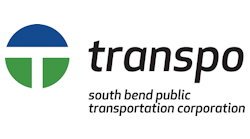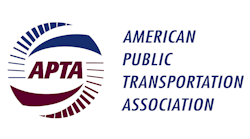At the American Public Transportation Association’s Public Transportation & Universities Conference in Grand Rapids, Michigan, the session “Marketing & Communicating Your Transit Services to Students” highlighted how to not only be creative in attracting students to public transportation — but also how some agencies are increasing ridership through initiatives.
Lolo Robison, director of marketing for Capital Area Transportation Authority (CATA), said their initiatives combine relative information portrayed in a fun or often humorous way. “Useful information and fun gives your campaign depth and encourages millennials to come back.”
Through CATA’s marketing research they concluded that 60 percent of millennials prefer to use Facebook over Instagram. CATA operates routes that serve Michigan State University and the majority of their riders use social media and have smartphones — which makes for a great marketing platform. One of CATA’s campaigns is its “Don’t be a Bushole” series. The video highlights what students voiced as their biggest pet peeves when riding transportation.
Amy Hill, director of marketing for South Bend Public Transportation Corp. (Transpo), said that it offers new services to entice students to not bring their cars on campus — preventing traffic. Offering free late night express lines, they also provide an option to keep students safe and prevent drinking and driving.
Through surveys, Transpo found that one of the top desires for students was convenience in their transportation system. Hill said that they also took an environmental approach, adding CNG fueling stations and vocalizing that with their riders.
Brittany Schlacter, outreach coordinator for digital media, The Rapid in Grand Rapids, said that they had found 95 percent of millennials expect transit businesses to have Facebook and 88 percent expect businesses to have a Twitter account. Schlacter highlighted six main areas millennials want: transparency, accountability, engagement, reach, social listening and feedback.
“Without talking to people, you’re not utilizing social media,” said Schlacter. “The more authentic conversations you have online, the larger your reach is.”
Social media can be a powerful tool — if you utilize it properly.
“The good, bad and ugly, we’re here to provide customer feedback.” Schlacter stressed the importance of responding to riders; taking the time to thank someone who voices a good experience they had and responding to negative comments with a ‘what can we do to make your experience better.’
Schlacter said that customers expect responses within 60 minutes. While responding to complaints can seem daunting or tedious. She said to first, take a breath, thank the customer for reaching out, apologize when necessary and gather specific details to solve the problem.



